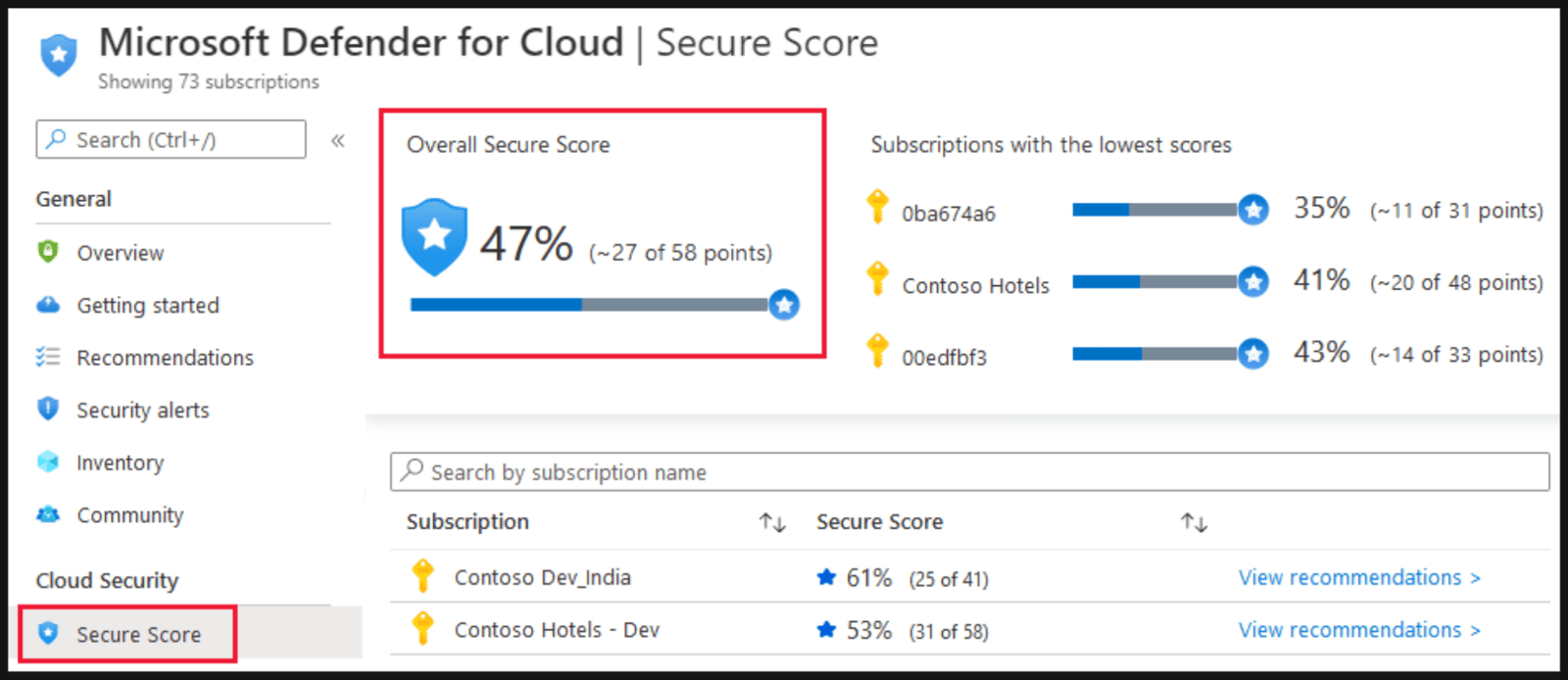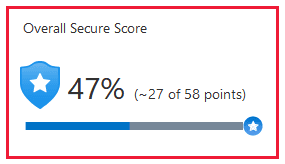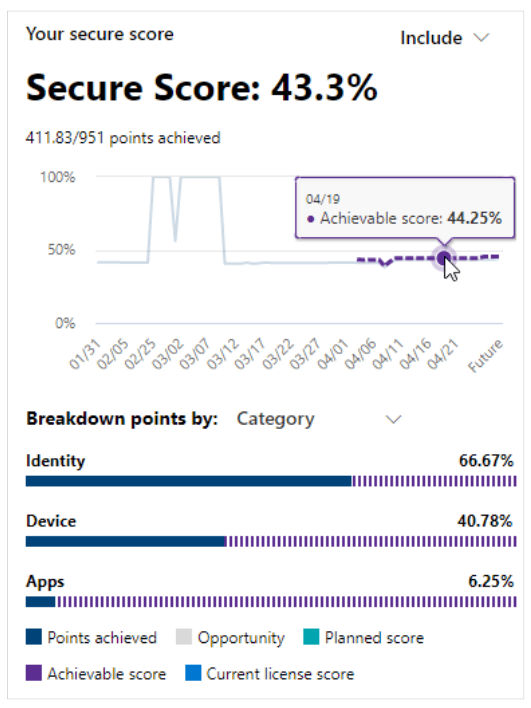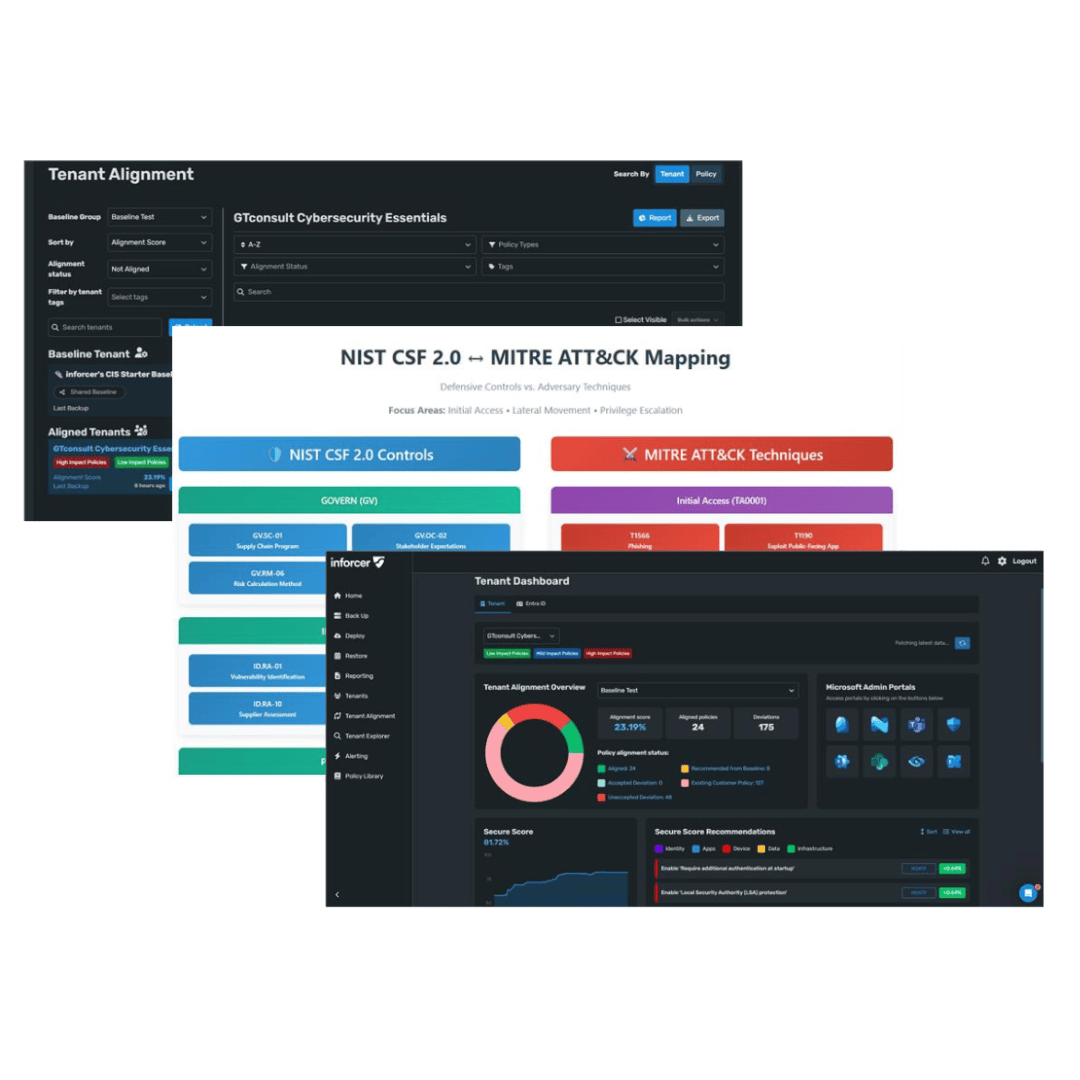A critical analysis for IT leaders managing Microsoft 365 security
Your Secure Score doesn't improve by accident. It improves through systematic, expert-driven security optimization. The question isn't whether your score should be higher—it's whether you have the capacity and expertise to get it there.

The Dashboard That Never Changes
You log into the Microsoft Defender portal for the third month in a row. Your Secure Score sits stubbornly at 58%. The same recommendations stare back at you. Enable MFA for all users. Configure DLP policies. Block legacy authentication. You know what needs to be done, but somehow, nothing changes.
If this sounds familiar, you're not alone. Organizations worldwide are discovering that Microsoft Secure Score—while an excellent security measurement tool—reveals a gap that many teams struggle to close: the difference between knowing what to do and actually doing it.
The real question isn't whether you understand the recommendations. It's whether you have the capacity, expertise, and processes to implement them effectively across your entire Microsoft 365 environment.
The Hidden Reality Behind Static Scores
Microsoft's 2025 Secure Score updates bring expanded coverage for Azure and Microsoft Defender, improved benchmarking, and easier compliance mapping to frameworks like NIST and ISO 27001. These enhancements make the score more comprehensive—and the recommendations more numerous.
For IT teams already stretched thin, this creates a paradox: better visibility into security gaps, but less time to address them.
Consider the typical scenario. Your organization has hundreds of improvement actions available. Some require significant resource commitments that turn into full-scale projects. Others demand specialized knowledge of Microsoft 365 security features that your team hasn't had time to develop. Many are locked behind higher-tier licensing that wasn't in this year's budget.
Meanwhile, threats don't wait for your next planning cycle. Microsoft mitigated 1.25 million DDoS attacks in 2024, representing a 4x increase compared with the previous year. The threat landscape is accelerating faster than most organizations can keep pace.
Why "Just Following the Recommendations" Doesn't Work
The Secure Score interface makes it seem straightforward: here's your score, here are recommendations, implement them, score goes up. Simple, right?
Except it's not. Each recommendation exists within a complex web of:
Admin accounts have access to everything—including the most sensitive data—yet properly securing these accounts requires coordinated effort across multiple teams and systems. Privileged access management remains one of the most challenging aspects of Microsoft 365 security configuration.

"As the resident security Analyst at GTconsult, this section hits closest to home as the competing priorities and time pressures that would arise before having the right tools for the job would mean endless days of burn out for myself and my team. With the right tools and knowledge, the security element is handled much more efficiently and free's up time to keep up with the day to day priorities."
The Compliance Connection You Can't Ignore
Here's what makes this more than just a security metrics problem: your Secure Score directly impacts compliance posture. The 2025 updates include easier mapping to compliance frameworks including NIST, ISO 27001, and industry-specific regulations.
If you're in a regulated industry—financial services, healthcare, government—your Secure Score isn't just an IT metric. It's evidence of your security control implementation. Auditors increasingly reference Microsoft's security recommendations in their assessments. A stagnant Secure Score can translate to audit findings, compliance gaps, and regulatory scrutiny.
For organizations managing POPIA compliance in South Africa, UK GDPR requirements, or multiple international frameworks, Microsoft 365 security configuration becomes a critical compliance control. The technical controls Microsoft recommends often align directly with regulatory requirements.
But here's the challenge: knowing that these configurations matter for compliance doesn't magically create the capacity to implement them.

Compliance Risk:
Audit findings from inadequate security controls
Regulatory penalties for insufficient data protection
Failed compliance certifications impacting business operations
Customer trust erosion from security incidents
Operational Inefficiency:
Security team time spent on repetitive manual tasks
Lack of automated security policy enforcement
Inconsistent security posture across the organization
Reactive security management instead of proactive protection
Strategic Limitations:
Inability to leverage advanced Microsoft 365 security features
Missed opportunities for security automation
Competitive disadvantage from inferior security posture
Restricted business initiatives due to security concerns
What Actually Moves the Needle
Organizations that successfully improve their Secure Scores share common characteristics. They don't just understand the recommendations—they have systematic approaches to implementation.

They Prioritize Strategically: Rather than attempting all recommendations simultaneously, they identify high-impact, low-effort changes first. Quick wins like disabling external calendar sharing, blocking third-party app registrations, and configuring Teams meeting lobby settings can improve scores by 12 points without additional licensing.
They Automate Where Possible: Manual security configuration across hundreds or thousands of users doesn't scale. Successful organizations leverage automation for policy deployment, security configuration management, and compliance monitoring.
They Maintain Consistency: Security improvements in one area of Microsoft 365 must be maintained as new users onboard, new applications deploy, and business requirements evolve. Consistent policy enforcement requires ongoing management, not one-time configuration.
They Bridge Technical and Business Requirements: Security improvements that break business workflows get rolled back or worked around. Effective implementation balances security requirements with operational needs, ensuring changes stick.
The Path Forward
Improving your Microsoft Secure Score isn't ultimately about the number on the dashboard. It's about systematically reducing your organization's risk exposure while maintaining operational efficiency and compliance requirements.
The challenge most organizations face isn't lack of intent or understanding. It's lack of capacity and specialized expertise to translate Microsoft's recommendations into effective, sustainable security improvements across complex Microsoft 365 environments.
Three critical questions determine whether your Secure Score will improve or remain static:
Do you have dedicated resources focused on Microsoft 365 security optimization, or is it competing with dozens of other IT priorities?
Do you have specialized expertise in Microsoft 365 security features, or is your team learning as they go while managing daily operations?
Do you have systematic processes for policy deployment, security monitoring, and ongoing compliance management across your Microsoft 365 environment?
If you answered "no" to any of these questions, you've identified why your Secure Score isn't improving—and what needs to change.
Taking Action
Organizations serious about improving their Microsoft 365 security posture recognize that wishful thinking won't change dashboard metrics. Sustainable improvement requires either significant internal capability development or partnership with specialists who focus exclusively on Microsoft 365 security optimization.
GTconsult's Secure Score Support provides dedicated expertise for organizations that need systematic Microsoft 365 security improvement. Using an all-in-one Office 365 cybersecurity solution designed for regulated organizations and security-focused businesses, we automate compliance, boost your secure score, and simplify control management.
Rather than struggling with recommendations your team doesn't have capacity to implement, you gain access to specialists who focus exclusively on Microsoft 365 security optimization, compliance automation, and ongoing security posture management.

